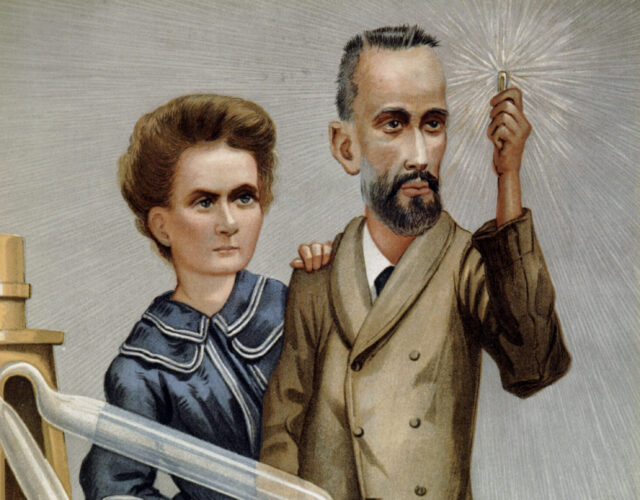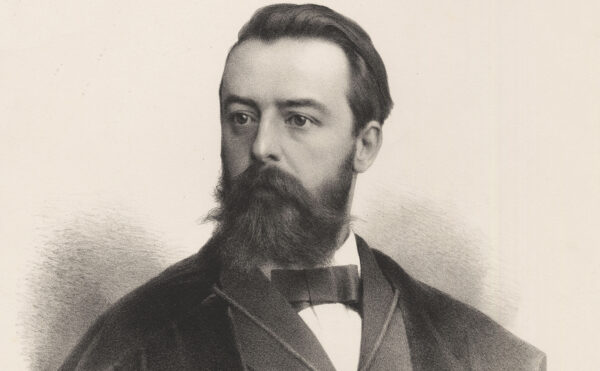On September 7, 1894, Pierre Curie made a confession. “I showed your photograph to my brother,” he wrote. “Was that wrong? He admired it.” No written reply has surfaced, but since Maria Sklodowska, subject of the photograph in question, married Pierre a year later, one assumes he earned her forgiveness. But the matter was hardly settled. Madame Curie, as she became known, was often praised for more than scientific achievement: “an exceedingly attractive woman, a delicate blonde with fair, blue eyes,” burbled one New York Times profile from 1903.
A few months later she won her first Nobel Prize (in Physics, shared with Henri Becquerel and her husband). A second, in Chemistry, would follow in 1911. In presenting the joint award the president of the Royal Swedish Academy of Sciences cited not Marie’s publications or research, but the book of Genesis: “It is not good that the man should be alone; I will make him an help meet for him.”
The frequent emphasis on Marie Curie’s gender and marriage packaged her unconventional life into a story more suitable for public consumption: woman—which was to say, wife—first, scientist second. A 1904 caricature from Vanity Fair, part of Chemical Heritage Foundation’s (now the Science History Institute) Fisher Collection, is a striking example of the role images played in creating the Curie myth—that of a brilliant man and his loyal “help meet” who struggled against poverty and indifference for the sake of scientific inquiry. The drawing shows husband and wife stationed in the lab, their steely gazes locked on a small, glowing beaker held by a beatific Pierre. Marie stands to the side, one hand resting on his shoulder, an expression of intense concentration on her face. Light like a halo diffuses from the beaker through the background. The caption reads, simply, “Radium.”
As demonstrated in Vanity Fair, it wasn’t only the couple the public wanted to see; their “wonderful metal” outshone them in many respects. In 1902, after four years of seemingly endless fractionations, Marie had isolated pure radium salts from ten tons of pitchblende ore. Even the small quantity she produced—less than half a teaspoon—contained unbelievable amounts of energy: enough, Pierre later demonstrated, to boil its weight in water in one hour. But radium’s true star quality was that strange glow. Marie herself liked to keep a vial by her bed, delighted by its “faint fairy light.”
Phosphorescence ironically is not a property of radium. But radioactivity—a word and concept first used by Marie—is. Her idea that this radiation came from the interior of the atom itself was a major conceptual leap. Given her age (31 at the time), background (still a student), and gender, it was also bold. At the turn of the century the scientific community was hotly debating the structure of the atom. Marie’s claims about radioactivity suggested that the atom contained something else—something that gave off energy. It was this question that she set out to study in her doctoral thesis and this work that her 1903 Nobel Prize acknowledged: “in recognition of . . . research on the radiation phenomena discovered by Henri Becquerel” stated the award. Radium, for all its glory, was not even mentioned. But it was mentioned in the press, almost to the exclusion of the Curies’ theoretical contributions.
Friends who knew the couple may have found it frustrating that Marie was relegated so often to the background, for she was always the one who raced to publish, to carve out a space for them in the research world. Pierre was the dreamer—a brilliant one, to be sure—but wholly indifferent to issues of money, success, or renown. As CHF celebrates the International Year of Chemistry, which includes the 100th anniversary of Marie’s second Nobel Prize (for, finally, the discovery of radium) the complex aspects of the Curies’ real and loving partnership and the pale imitations that dominated the media may demand another look.




